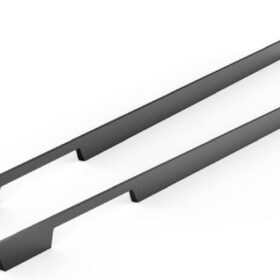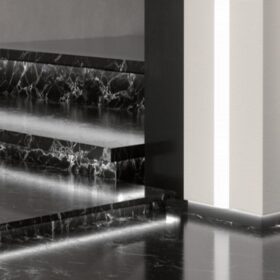How to Measure and Cut Frame Aluminum Profiles for a Perfect Fit
In the realm of precision engineering, the task of measuring and cutting aluminum profiles for a perfect fit can be a daunting endeavor, akin to threading a needle in the dark. To achieve flawless results, a meticulous approach and a keen eye for detail are paramount. Here’s a comprehensive guide to help you navigate this intricate process with ease.
1. Precise Measurement:
The foundation for a perfect fit lies in accurate measurements. Use a high-quality measuring tape or a caliper to determine the exact length and width of the profiles. Allow ample room for adjustment to account for any potential variations in material thickness or cutting precision.
2. Marking the Cuts:
Once the measurements are taken, use a sharp pencil to mark the cutting lines on the profiles. Utilize a straight edge or a protractor for straight cuts and a compass for curved cuts. Double-check your markings to ensure they are parallel and perpendicular to the profile’s edges.
3. Selecting the Right Cutting Tool:
The type of cutting tool you use will depend on the thickness of the aluminum profiles. For thin profiles, a miter saw or a chop saw is ideal. For thicker profiles, a bandsaw or a circular saw with a metal-cutting blade is recommended.
4. Proper Cutting Techniques:
Secure the profiles firmly in the cutting tool’s vice to prevent movement and ensure a clean cut. Use a sharp blade to minimize burrs and maintain precision. Slowly guide the profile through the blade, maintaining a steady cutting pressure.
5. Refining the Cuts:
After the initial cuts, use a file or a sanding block to refine the edges to achieve a perfect fit. Remove any burrs or sharp corners to ensure smooth assembly and prevent injury.
6. Dry-Fitting and Adjustments:
Before permanent assembly, dry-fit the profiles together to check for proper alignment and fit. Make necessary adjustments to the cuts or the profiles to ensure they connect seamlessly.
7. Precision Assembly:
Once the dry-fitting is complete, use an adhesive or mechanical fasteners to permanently assemble the profiles. Apply the adhesive or fasteners evenly and tighten them securely to maintain the desired fit and prevent any loosening over time.
By following these meticulous steps, you can confidently measure and cut aluminum profiles for a seamless fit, transforming your project into a masterpiece of precision and elegance.
-
2025-12-23Wholesale Cabinet Handles: Building Partnerships on Quality with KRC®
-
2025-12-23Cabinet Door Pull Handles: The Defining Signature of Your Space by KRC®
-
2025-12-23Custom Cabinet Handles: Express Your Vision with KRC® Precision
-
2025-12-23Finding the Perfect Cabinet Handles for Sale: The KRC® Promise of Elegance and Durability
-
2024-11-29Top Trends in Modern Kitchen Cabinet Pulls for 2024
-
2024-11-28The Ultimate Guide to Modern Kitchen Cabinet Pulls- Materials, Styles, and Tips
-
2024-11-27Elevate Your Kitchen Design with These Must-Have Modern Cabinet Pulls
-
2024-11-26Sleek and Stylish- The Best Modern Kitchen Cabinet Pulls for a Contemporary Look










